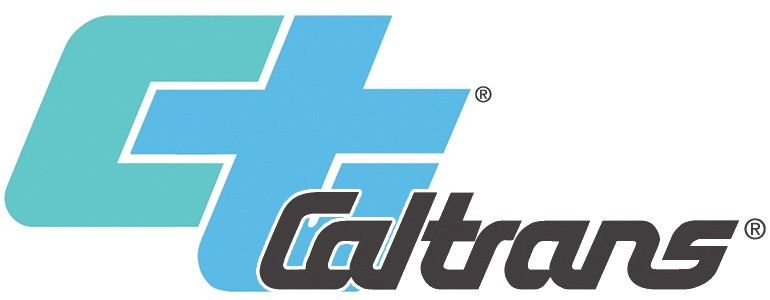24 years of Caltrans well-drilling ignored laws; risked groundwater contamination
 Sacramento County is threatening to fine Caltrans millions in taxpayer dollars for drilling hundreds of wells over a period of decades in violation of laws aimed at protecting groundwater, records show.
Sacramento County is threatening to fine Caltrans millions in taxpayer dollars for drilling hundreds of wells over a period of decades in violation of laws aimed at protecting groundwater, records show.
The county set the possible fine at as much as $5.23 million per day to locate and follow proper procedures for a fraction of the wells — the most extreme measure thus far in a long-running jurisdictional spitting contest. The county says the state should have obtained permits, licenses and inspections for 523 narrow wells drilled from January 1990 to May 2014, according to a notice of violation obtained by CalWatchdog.
The wells, four to six inches in diameter, are used to monitor geological conditions and water levels for safe building purposes. State water laws are aimed at making sure the holes, which can extend hundreds of feet into the ground, don’t allow for untreated stormwater or hazardous chemicals to pollute groundwater, which the holes often intersect with.
Caltrans lawyers have for years advised staff that while the agency was subject to the laws, Caltrans could police itself. The agency relied on those opinions in deciding not to obtain the same approval and paperwork from county agencies required of a private individual or company undertaking similar drilling.
Under pressure from county environmental agencies, Caltrans shifted its stance in 2014, announcing its intent to follow the law going forward and outlining a plan to locate wells throughout the state and to work under the proper license.
“Our intention has always been to play by the rules, and ensuring that you are in compliance is always a best practice, whether you are an individual or a state department,” Caltrans spokesman Mark Dinger said.
Statewide
The dispute with Sacramento County is one of several across the state involving the drilling regulations. The agency has had relatively recent run-ins in Marin, Mendocino, San Joaquin and Humboldt counties. Some of those counties and others have filed records requests on well drilling in their jurisdictions.
The state estimates it drilled 10,000 borings across the state since 1990, though some would not have been subject to the state Water Code at issue.
CalWatchdog asked Dinger why the state agency failed to fully adhere to state and local laws during that time.
“Caltrans adopted policies in 2014 to ensure that its operations are in full compliance with the California State Water Code and the local enforcement agencies’ standards, and is working with local enforcement agencies to resolve issues from previous practices,” Dinger said.
The Sacramento County issue
As a result of not alerting Sacramento County and not keeping adequate records, Caltrans lost track of most of the wells, although some may be covered by structures. At the county’s urging, Caltrans tried to locate all 523 wells in 2015, finding 35.
The notice says that the records of how the 35 were sealed did not match what was observed by county inspectors, and internal discussions suggest that the wells were not sealed appropriately.
Cheryl Hawkins, supervising environmental specialist with Sacramento County’s Environmental Management Department, would not say whether any testing to check the groundwater had been done to follow up on Caltrans’ drilling. Hawkins said that failing to follow county standards has “potentially caused groundwater contamination,” but added there’s no “concrete evidence” of contamination.
Caltrans’ Dinger said the state does not test groundwater as part of its drilling, but it had taken extra precautions when drilling “in or near areas of known contamination.”
Caltrans was ordered to find 16 particular holes to comply with the violation notice, but only found four. Sacramento County is working on a response, which will include any enforcement actions, including the a fine, if there is one.
Background
In 2014, Sacramento County environmental official Susan Williams noticed a Caltrans work crew drilling in Courtland. Williams, who has since retired, told the crew that work could not continue until a permit had been obtained, an inspection had been scheduled and other requirements had been met.
The crew chief told Williams that Caltrans was “exempt from local agency permitting requirements,” according to the county violation notice.
Williams issued a cease and desist letter, pointing out the site they were drilling, along the Sacramento Delta, was a “sensitive area” with respect to groundwater and required a special sealant to prevent contamination through improperly sealed wells.
It was not the first time Williams had wrestled with Caltrans. In 2003, Williams and another county official told a Caltrans crew that permits for drilling were required and said the county would cite anyone tied to drilling.
Williams emailed Caltrans staff in early 2015, asking for documentation on the agency’s plan to find and backfill the holes. Based on what she’d seen so far, “nothing even came close to being sealed properly.”
Meanwhile, some Caltrans employees were urging change.
Internal cracks
Caltrans had made coordination with counties optional and had developed a form letter to provide notice when the agency planned to drill a well. The letter was rarely issued. The agency had determined that employees, consultants and contractors did not need to obtain permits for the drilling or pay related fees.
And the agency decided it would work under a C-57 professional license — typically required when water is struck — only when drilling in or near areas of known contamination.
That policy worried Douglas Brittsan.
In a Feb. 2014 email to Geotechnical Services division’s upper management, including the then-Geotechnical Design regional chiefs and then-Deputy Division Chief Phil Stolarksi, Brittsan, the supervising transportation engineer, asked the group if notification to counties was required. Brittsan said that the language in the boilerplate cover letter said Caltrans would comply with a county’s program, but that “we currently are not.”
Brittsan said the state didn’t have the equipment needed to backfill the holes properly and noted that Caltrans’ preferred method for backfilling was not allowed in some counties.
“Notification is not a requirement,” said Timothy Pokrywka, one of the regional Geotechnical Design chiefs.
Brittsan argued that it was best to notify anyway. Otherwise they were subject to “getting spotted and ratted on, and with the county having no record of us being there.”
“Wouldn’t it be better if it was required so we are transparent with the county (or other agency)?” Brittsan asked before stating he didn’t “agree with our current policy,” calling it “wishy washy.”
Pokrywka said the issue had been “widely debated” among the division’s brass for years and that he used to agree with Brittsan.
“It was decided that each Office Chief has to manage their own risk,” Pokrywka wrote. … “It does put drilling services staff in a precarious position.”
Policy shift
By April 2014, Brittsan had persuaded enough people to play by the rules. Under pressure from Sacramento County, the policy shifted. Agencies needed to be notified ahead of time, and local procedures were to be followed. Well completion reports were to be filed. And workers were to fill the wells with the preferred sealant with a device called a tremie used to guarantee the seal within groundwater.
The licensing issue was still being worked out internally, so activities requiring a C-57 were subcontracted out and the subcontractors were demanding that the rules be followed or else their license couldn’t be used.
“If your work falls under the Water Code then that code needs to be followed and Caltrans is NOT exempt from its requirements,” Brittsan wrote to staff. “Ostensibly, Caltrans is exempt from obtaining permits and paying fees, however (the contractors) are requiring that we obtain permits and pay fees or else we cannot use their license.”
In June 2014, Caltrans Director Malcolm Dougherty sent a memo to Brian Kelly, the secretary of the California State Transportation Agency, stating that Caltrans now agreed with Sacramento County about following local procedures.
Dougherty admitted to Kelly that the lack of documentation, combined with an “ill-defined business process means Caltrans cannot represent that we have adequately protected groundwater during our drilling operations as required” by state law.
Caltrans has since worked with local agencies to locate and reseal old wells and follow the rules on new ones.
As of December, Caltrans reported in a informational document that it had found and properly sealed 7 percent of its borings on active and planned projects statewide. The agency will soon hunt for older holes and estimates less than 5 percent total will be accessible for resealing.
Caltrans estimates that $750,000 has been spent since 2014 in Sacramento County in the effort to go back and reseal previous borings and $3.7 million statewide. The agency estimates that to finish the job it will take “several million more.”
The law
In 1986, the Legislature amended the California Water Code to include in its definition of regulated wells many of the same kind Caltrans drills.
The measure and subsequent laws did several things, including defining the state as a person regulated by the law and setting a minimum statewide standard for best practices, requiring a C-57 license and the filing of well completion reports with the Department of Water Resources documenting proper sealing of the wells.
The law also empowered local agencies to meet or exceed those standards for drilling in their individual jurisdictions. Sacramento County passed an ordinance requiring notification, permitting, inspections and completion reports.
But Caltrans’ legal opinions provided the agency cover in ignoring the substance of the law.
Legal opinions
There are at least four legal opinions prepared by Caltrans in-house counsel dating back to 1998, three of which say the law needs to be followed to some degree. While all agreed that Caltrans was subject to the Water Code, the opinions gave the agency free rein to determine its own compliance.
The 1998 opinion came after Contra Costa County complained Caltrans was drilling without a permit. The opinion argued the kind of borings Caltrans was drilling were not the same type of wells regulated in the Water Code.
In May 2003, another opinion said that Caltrans didn’t have to follow any of the rules if the drilling was for a “state highway purpose.” That opinion, the only one entirely supportive of Caltrans’ position, was quickly overruled by another, which said Caltrans was subject to state and local laws but not required to pay related fees.
Then in 2011, another legal opinion said Caltrans was subject to state and local laws, like the C-57 license requirement, but didn’t need to get locally mandated permits because permits weren’t specifically mentioned in the state law.
Actual practices varied
“We do not necessarily need to abide by every specific local agency requirement,” an internal 2012 memo from Pokrywka, on behalf of the Geotechnical Services management team that included the Geotechnical Design regional chiefs and the Geotechnical Support chief, who at the time were: Abbas Abghari, Roy Bibbens, John Ehsan, Mark Willian and Pokrywka.
“It is possible to negotiate with the local agency on some of these requirements. Since we are not legally directly subject to all their provisions, we can choose not to implement requirements that are too extreme or superfluous,” Pokrywka said.
Pokrywka wrote that compliance with state and local laws “would add time and costs to projects,” and that the C-57 licensing requirement adds “potential cost, procedure and labor relations issues.”
Pokrywka recommended that staff only notify local jurisdictions of drilling activities when “it is in the best interest of Caltrans.”
Mendocino County
Caltrans often maintained it would comply with the substantive provisions of the groundwater protection program. However, it did not always properly seal its wells — arguably the most important component of the law.
Between 2004 and 2008, Caltrans back-filled more than 100 wells in Mendocino County with bentonite chips, state records show.
“That’s not typical practice for this county,” William Nalty, an environmental health technician at Mendocino County Environmental Health, told CalWatchdog.
That material is generally used for shallow borings, not the deep holes that Caltrans was drilling, primarily because it’s difficult to seal deep wells with it. Grout with a tremie is preferred.
Nalty added that with the drought, “more and more people are pumping out of the water table, so we want to make sure it’s clean and not contaminated.” Nalty also praised Caltrans’ efforts since 2014.
The agency’s practices in Mendocino County came to light as part of a 2015 case before a professional board questioning whether agency staff should have had a C-57 license to drill the wells, obtain permits and file completion reports. Caltrans prevailed because, as the board argued, the wells were “reportedly” sealed properly.
Marin County
The agency has also been criticized by officials in Marin County.
In February 2014, county inspector Scott Callow sent an email to Sacramento County’s Williams, saying the lack of permitting and the rogue drilling was not the most troubling part in his county’s interactions with Caltrans, but rather the apparent lack of training on the part of Caltrans engineers.
“The apparent lack of basic knowledge of the possible contamination threats to groundwater is most concerning,” Callow wrote, complaining of crews trying to fill deep holes without a tremie.
“How do you explain the blank looks when discussing a tremie,” Callow asked.
Drilling in contaminated sites
Instead of contacting the local agency first to find out if there were any contamination issues with the site, Caltrans would routinely do its own determination of the risks.
However, that plan didn’t always work. A San Joaquin County official in February 2014 complained of catching Caltrans drilling wells without prior notification (and noted that Caltrans was not calling the wells “wells”). The official complained that staff was not properly trained on drilling in contaminated areas.
“These wells were going to be left indefinitely to help drain the storm-water pond,” San Joaquin County’s Adrienne Ellsaesser wrote in an email to officials in other counties. “This would allow any hazardous spill/waste from the freeway to run into the pond and drain directly into and contaminate our groundwater.”
Related Articles
Drought War: GOP and Dems in fight over CA water policy
Call it the Drought War. Democratic California Sen. Dianne Feinstein is fighting with three Republican U.S. representatives over water policy
California’s version of Obamacare a success? Not by the numbers
I’m pretty amazed at how long the CA media have gone along with the idea that the state’s version of
Kevin De Leon Fights Evil Unfitted Sheets!
Commentary The Legislative Goofball of The Session Award goes to Sen. Kevin De Leon, D-Los Angeles, for his Senate Bill




